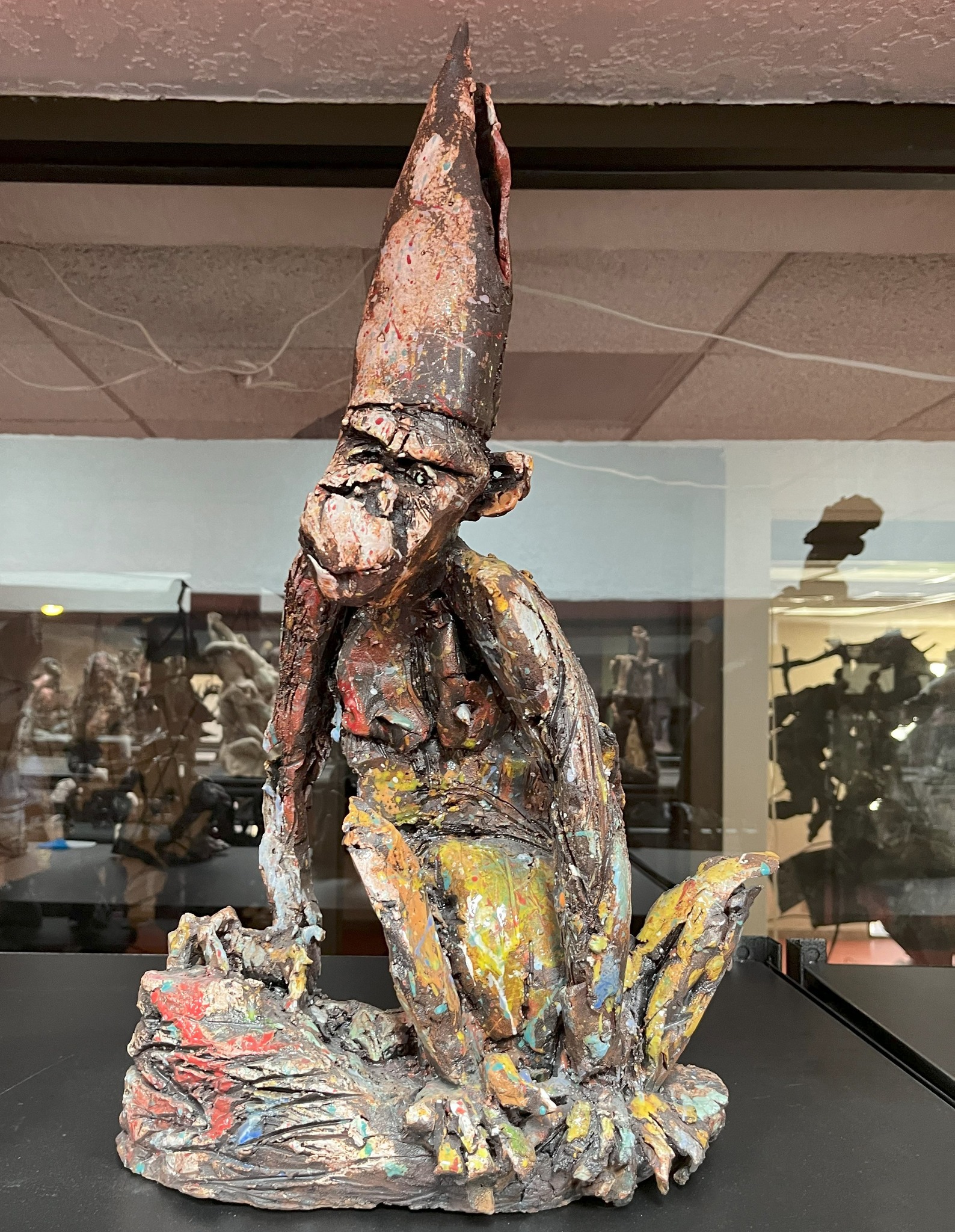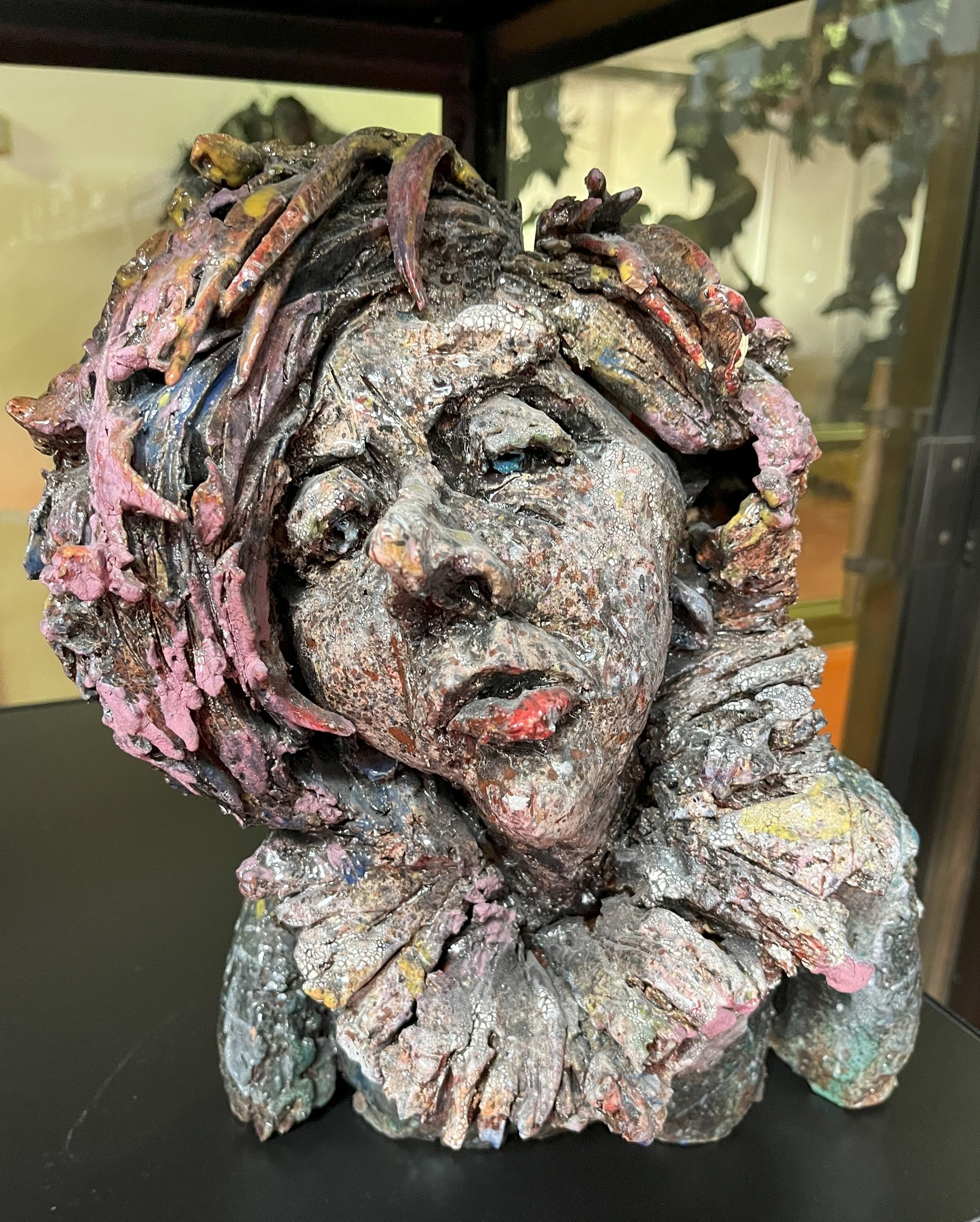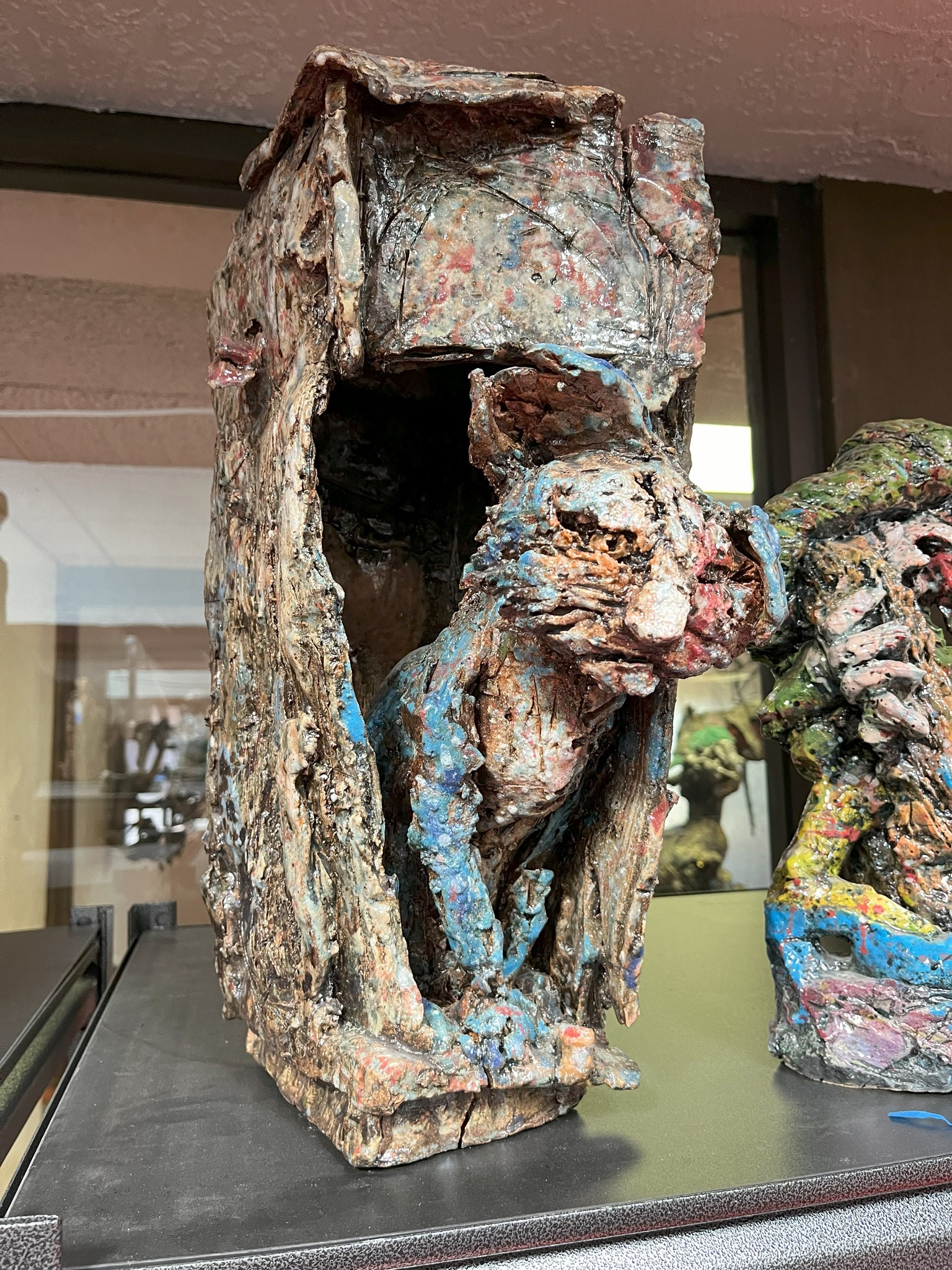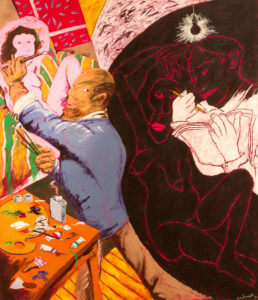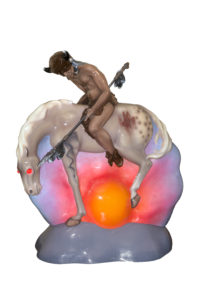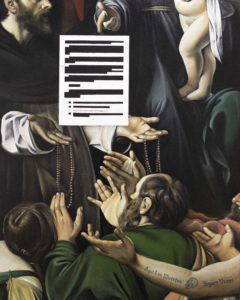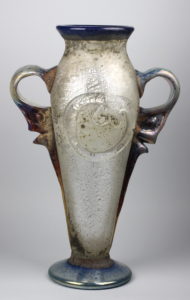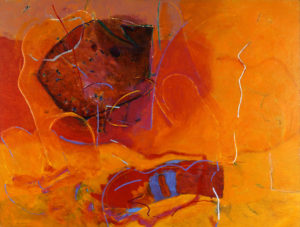University of Arizona School of Art alumnus Michael Cajero, a prolific Tucson artist whose striking papier-mâché sculptures represented what he called the human condition, died on May 24. He was 77.
The Process Museum, on Tucson’s far southeast side, houses over 6,000 pieces of Cajero’s art, including ceramics, paintings and drawings. “I’ve dedicated a 5,700 square-foot building solely for his work,” said John Wells, owner of the museum, 8000 S. Kolb Road.
“I never get tired of the creative bombardment that poured from the mind of this artist,” U of A alum Paul Gold (BFA ’83, Studio Art), a Tucson publisher of regional art books, said about Cajero, who died one day before his 78th birthday.
Born in Tucson in 1947 at St. Mary’s Hospital, Cajero learned how to draw looking at comic books and watching a local instructor on television, Charles “Chuck Waggin” Amesbury, whose “Cartoon Corral” show ran on KVOA-TV from the mid-1950s to the early ’60s.
Cajero received his BFA in painting in 1969 from the U of A and earned his master’s in Art History and Sculpture from Kent State University in Ohio. He was the recipient of Visual Arts Fellowships from the Tucson Pima Arts Council in 1994 and 2001 and a National Endowment for the Arts Fellowship in 1993. In 2003, he was voted the city’s “best artist” by Tucson Weekly readers.

“Cajero’s arte povera materials, tattered and torn, are like no one else’s; and his subjects — injustice, violence, human despair and desperation — make him an artist of searing conscience.” — Tucson Weekly, 2003
(Photo of Cajero courtesy of the artist’s Instagram page)
In his sculptures, Cajero wrapped skeletons of bendable aluminum wire with discarded wrapping paper, corrugated cardboard and other used paper products. He then painted or stained the form, usually in black.
“I like black because the sculptures stand out against the background,” he told Arizona Illustrated in a 2013 interview. “The key is to get a simple image, a quick image that reads really quickly. And black does that.”
Cajero said his creations started with an image and the form, not with words or with an idea. War and despair influenced his art.
“My interest is to shed pathos and feeling through the work about the human condition — and about living in the world,” he said.
In a 2009 Phoenix New Times review, Lila Menconi wrote that Cajero’s figures “communicate so much angst, despair, drive, survival, isolation and heart … name a heavy emotion and Cajero can sculpt it.”
“He uses figures of animals and humans to achieve visceral responses among his viewers,” Menconi wrote. “And he does this extremely well.”
Cajero moved his collection to the Process Museum because he ran out of room in his studio. Inside the building, “it was the first time in my life I’d been able to work with space the way I wanted to work with space,” he said. “I draw in space.”
He added: “Each room has a different installation. They deal with different ideas, different themes. And then I have some obscure rooms where the meaning is intentionally obscure so that people can bring their own meaning to the room.”
In fall 2024, Cajero presented a collection of drawings — “Muerte: Mom Series” — at Pima Community College’s West Campus Visual Arts Gallery that delved into themes of life, death and the poignant relationship between mother and child. His mother was hospitalized with dementia the final year of her life. Cajero visited her daily and recorded what he saw in over 100 drawings, Gold said.
“Known for his work in Arte Povera and Process Museum, Cajero infuses these drawings with the raw emotionality and ephemeral quality characteristic of his assemblage sculptures,” the PCC gallery said. “By merging bold lines and fragmented forms, Cajero creates powerful, evocative pieces that reflect his deep connection to Mexican folklore and social commentary, inviting viewers to explore the complexities of human existence and mortality.”
Pima Community College hosted Michael Cajero’s “Muerte: Mom Series,” his last exhibition in fall 2024: “Explore life, death and the bond between mother and child in this powerful series of drawings,” PCC Arts wrote on its Instagram page.

Michael Cajero was preceded in death by two brothers who also graduated from the University of Arizona: Paul Cajero (’65, Theatre Arts), who enjoyed a 50-year career in television in Los Angeles as a producer, writer and director; and Roy Cajero (’72, English), who was a librarian in Memphis. Roy died in 2014 and Paul in 2017. Michael’s youngest brother, Nick F. Cajero (’79, Architecture), also is a U of A alumnus.
In addition to his own work, Michael Cajero taught art to youths and adults, including at the Tucson Museum of Art.
His time at the School of Art left an impression on classmates such as Dave Castelan (BFA ’69, Studio Art), who went on to become a graphic artist for the Arizona Daily Star.
“Michael was truly one of the great visionaries ever in Tucson,” Castelan said. “His vision was evident even (as a student at the U of A), and he was always moving on to his next creation. At the end of the semester, I found him sitting on the floor going through through his art before he destroyed them, I told him his work was beautiful, but he replied they were just a learning process and he had to move on. Such an amazing will.”




